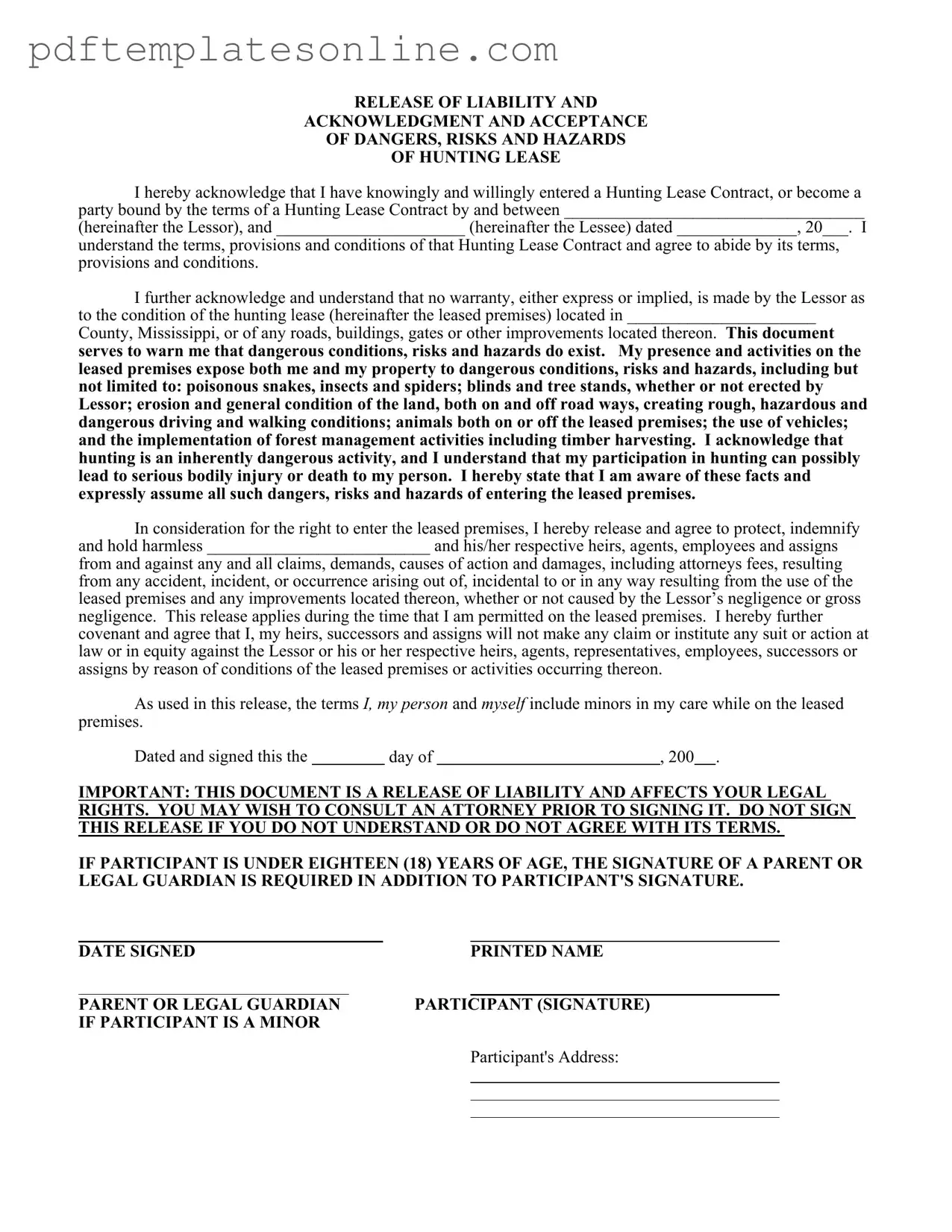Completing the Liability Hunting form is a critical step for anyone wishing to engage in hunting activities on leased land. However, there are common mistakes that individuals often make, which can lead to complications or even legal issues down the line. Understanding these pitfalls is essential for ensuring that the form is filled out correctly and that all parties are protected.
One frequent mistake is failing to provide complete information. The form requires specific details, such as the names of the Lessor and Lessee, as well as the date of the contract. Omitting any of this information can render the contract invalid. It's important to double-check that all blanks are filled in accurately. Incomplete forms can lead to misunderstandings regarding the terms of the lease and the responsibilities of each party.
Another common error is not understanding the terms of the release. Many individuals sign the form without fully grasping the implications of the release of liability. This document is designed to protect the Lessor from claims resulting from accidents or injuries that occur on the leased premises. Participants should take the time to read and comprehend the language used in the form. If there are any uncertainties, seeking legal advice before signing is highly advisable.
Additionally, individuals often neglect to consider the implications for minors. If a participant is under eighteen years of age, the signature of a parent or legal guardian is required. Failing to include this signature can invalidate the agreement for the minor. This step is crucial to ensure that all legal guardianship requirements are met, protecting both the minor and the Lessor.
Finally, people sometimes overlook the importance of the warning section. The form clearly states the risks associated with hunting, including dangerous wildlife and hazardous conditions. Acknowledging these risks is not just a formality; it is a vital part of understanding what one is entering into. Ignoring this section can lead to serious consequences if an accident occurs, as it may affect the ability to claim damages later on.
In summary, filling out the Liability Hunting form requires careful attention to detail. Avoiding these common mistakes—providing complete information, understanding the release terms, obtaining necessary signatures for minors, and acknowledging the risks—can help ensure a safer and more responsible hunting experience.
